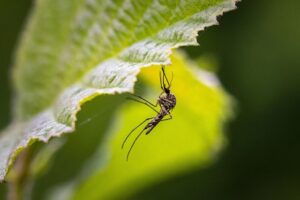Mosquitoes pose a significant global health threat as vectors for diseases like malaria, dengue fever, Zika virus, and West Nile encephalitis. Effective mosquito control relies on understanding their breeding grounds (stagnant water in containers and dense vegetation), implementing preventive measures like regular inspection and maintenance of drainage, cleaning containers, and trimming vegetation. Natural repellents like citronella oil (up to 80% effective) and essential oils from lavender, peppermint, and neem offer chemical-free alternatives. Chemical repellents like DEET, picaridin, and IR3535 are effective but require careful use and reapplication. Physical barriers like screens and insect-repellent clothing provide additional protection. Environmental management, particularly reducing stagnant water sources, is crucial for mosquito control. Innovative technologies in urban settings include UV light traps and drone-based insecticide delivery. Community engagement through education on mosquito behavior and breeding grounds enhances proactive prevention efforts.
Mosquitoes are more than just a nuisance; they’re vectors for life-threatening diseases like malaria, dengue fever, and Zika. Effective mosquito control is paramount for public health globally. This comprehensive guide delves into various strategies to combat these pesky carriers of illness. From understanding disease impact to innovative urban solutions, we explore natural and chemical repellents, physical barriers, environmental management, and community engagement. Armed with knowledge, we can create a safer, healthier world, one step at a time.
Understanding Mosquito-Borne Diseases and Their Impact
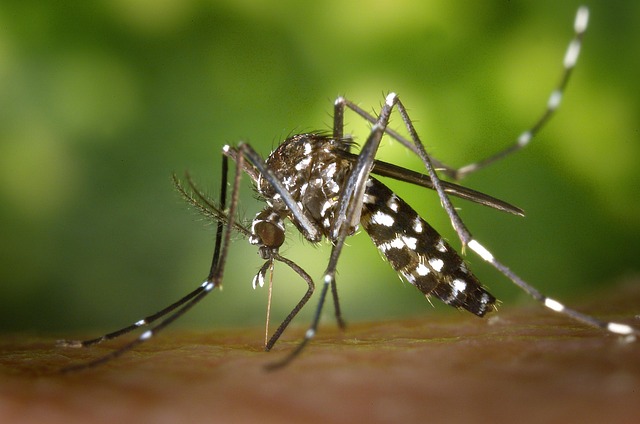
Mosquitoes, though small, pose a significant global health threat as vectors for various diseases. Understanding mosquito-borne illnesses and their impact is paramount in implementing effective mosquito control measures. Diseases like malaria, dengue fever, Zika virus, and West Nile encephalitis are transmitted by infected mosquitoes, leading to severe health consequences, including mortality. These diseases disproportionately affect vulnerable communities, especially in tropical and subtropical regions with poor sanitation and limited access to healthcare.
The devastating effects of mosquito-borne illnesses underscore the need for comprehensive mosquito control strategies. Preventative measures such as eliminating breeding grounds, using insecticides, and employing personal protective equipment play crucial roles in reducing disease transmission. By combining these approaches, communities can significantly decrease the risk of mosquito-borne diseases and enhance overall public health security.
Identifying Common Mosquito Breeding Grounds in Your Environment
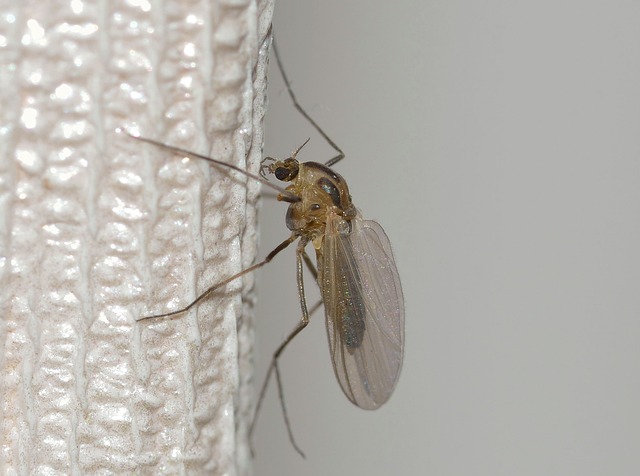
Mosquitoes are more than just a nuisance; they’re public health pests that can transmit diseases like Zika, West Nile, and malaria. To effectively implement mosquito control, understanding where they breed is key. Common breeding grounds include stagnant water in containers like buckets, flower pots, or old tires, as even small amounts of standing water can serve as a haven for these insects. Additionally, dense vegetation and areas with poor drainage provide ideal hiding spots and lay sites for female mosquitoes.
Regularly inspecting your environment for potential breeding sites is crucial for mosquito control. Emptying and cleaning containers, maintaining proper drainage, and trimming vegetation are effective preventive measures that can significantly reduce mosquito populations in your surroundings. By addressing these breeding grounds, you’re not just minimizing the risk of mosquito bites; you’re actively contributing to a healthier, safer community.
Natural Repellents and Their Effectiveness: A Scientific Perspective

Natural repellents have long been a go-to for mosquito control, offering an appealing alternative to chemical-based solutions. Scientific studies have explored the effectiveness of various natural compounds in warding off mosquitoes. One of the most well-researched is citronella, derived from grasses like lemongrass and catnip. Research suggests that citronella oil can repel mosquitoes up to 80% when applied correctly, making it a popular ingredient in candles, sprays, and skin lotions. Another natural compound, DEET (N,N-diethyl-m-toluamide), has been shown to be highly effective, providing protection for up to several hours. However, some individuals may experience skin irritation, prompting the development of plant-based alternatives.
The scientific community continues to investigate essential oils from plants like lavender, peppermint, and neem, which exhibit mosquito-repelling properties. These natural solutions offer a safer and more environmentally friendly approach to mosquito control, especially for outdoor activities. While they may not provide the same duration of protection as DEET, their effectiveness in repelling mosquitoes is well-documented, contributing to an overall reduction in bites and the potential transmission of diseases.
Chemical Repellents: Active Ingredients and Safety Measures

Chemical repellents play a significant role in mosquito control, offering effective protection against bites. The key active ingredients in these products often include DEET (N,N-diethyl-m-toluamide), picaridin, oil of lemon eucalyptus, and IR3535. These substances work by masking human odours that attract mosquitoes or interfering with their ability to detect carbon dioxide, thus reducing the chances of a bite.
While chemical repellents are widely available and commonly used, it’s crucial to consider safety measures. Always follow product instructions and ensure proper application, especially on children and sensitive skin. Regularly reapply as recommended, typically every few hours during prolonged outdoor activity. Additionally, be mindful of potential side effects; some people may experience skin irritation or allergic reactions, so patch testing is advisable before widespread use.
Physical Barriers: Screens, Nets, and Clothing as Protective Gear

Mosquitoes can be a nuisance, but there are effective physical barriers that serve as robust tools in mosquito control. One of the simplest and most common methods is using screens on windows and doors. These fine mesh barriers allow fresh air to circulate while keeping mosquitoes out, providing an easy solution for indoor protection. Nets, particularly when hanging over beds or seating areas outdoors, offer a peaceful retreat free from biting insects.
Clothing can also be an essential part of mosquito protection. Long sleeves, pants, and socks made from tightly woven fabrics create a physical barrier against the tiny pests. Many modern garments are treated with insect-repellent chemicals, offering added protection during outdoor activities. These simple yet effective methods form a first line of defense in personal mosquito control, especially when combined with other preventive measures for enhanced protection.
Environmental Management: Reducing Standing Water and Breeding Sites
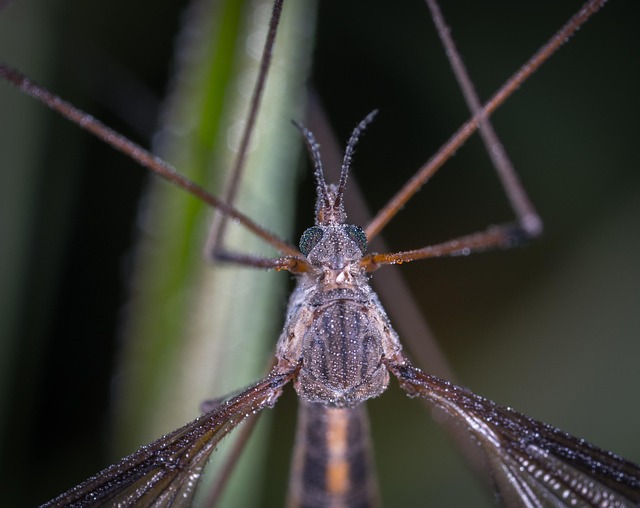
Mosquitoes breed in standing water, so one effective strategy for mosquito control is environmental management, particularly reducing and eliminating stagnant water sources. This involves proactive steps to minimize breeding sites around homes and public spaces. Homeowners can check their properties regularly for any standing water, such as in flower pots, buckets, or clogged gutters, which can serve as perfect mosquito breeding grounds. Emptying and cleaning these items on a consistent basis significantly reduces the risk of mosquito-borne diseases.
Moreover, maintaining a well-landscaped yard with proper drainage systems can prevent water from pooling. Public health officials also play a crucial role in mosquito control by conducting inspections and addressing standing water issues in common areas, parks, and urban landscapes, further enhancing overall protection against these pests.
Innovative Technologies for Mosquito Control in Urban Areas
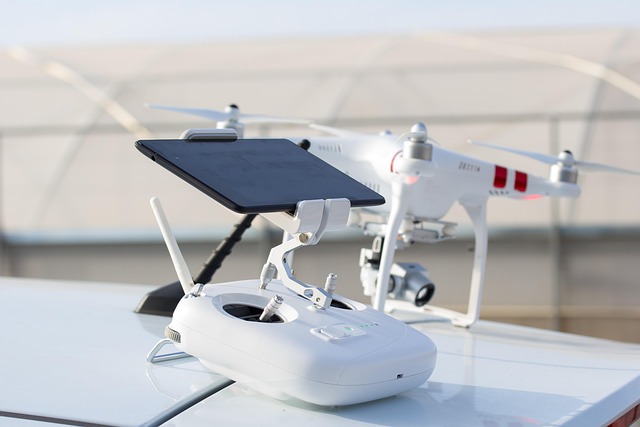
In urban areas, where mosquito populations can thrive due to standing water and dense human settlements, innovative technologies are revolutionizing mosquito control. One such technology is the use of UV light traps, which attract mosquitoes with ultraviolet radiation and then capture them using fans or sticky surfaces, effectively reducing local mosquito counts. Another promising method involves releasing genetically modified mosquitoes that carry enzymes rendering their offspring non-viable, leading to a gradual decline in wild mosquito populations over time.
Additionally, smart city infrastructure is being leveraged for mosquito control. Sensors and automated systems can detect and eliminate standing water sources—a primary breeding ground for mosquitoes—before they become viable for reproduction. Furthermore, the integration of drones equipped with insecticides or biological agents offers precise and targeted treatment in hard-to-reach areas, ensuring more effective mosquito prevention strategies in urban environments.
Community Engagement and Education for Effective Mosquito Prevention
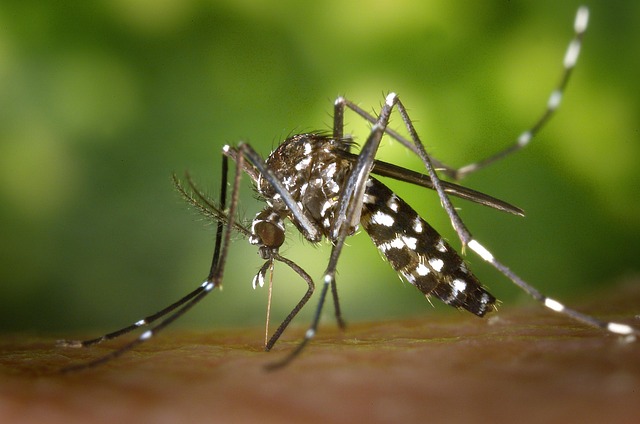
Community engagement and education play a pivotal role in effective mosquito control. By empowering residents with knowledge about mosquito behavior and breeding grounds, communities can collectively take proactive measures to prevent and reduce mosquito-borne diseases. Encouraging simple practices like eliminating standing water, maintaining proper drainage, and using insect repellent can significantly impact mosquito populations.
Educational initiatives can be tailored to suit local environments and cultural contexts, ensuring that everyone in the community understands their role in mosquito prevention. This collaborative approach fosters a sense of collective responsibility, leading to sustained efforts in managing and controlling mosquito-related issues for the long term.
